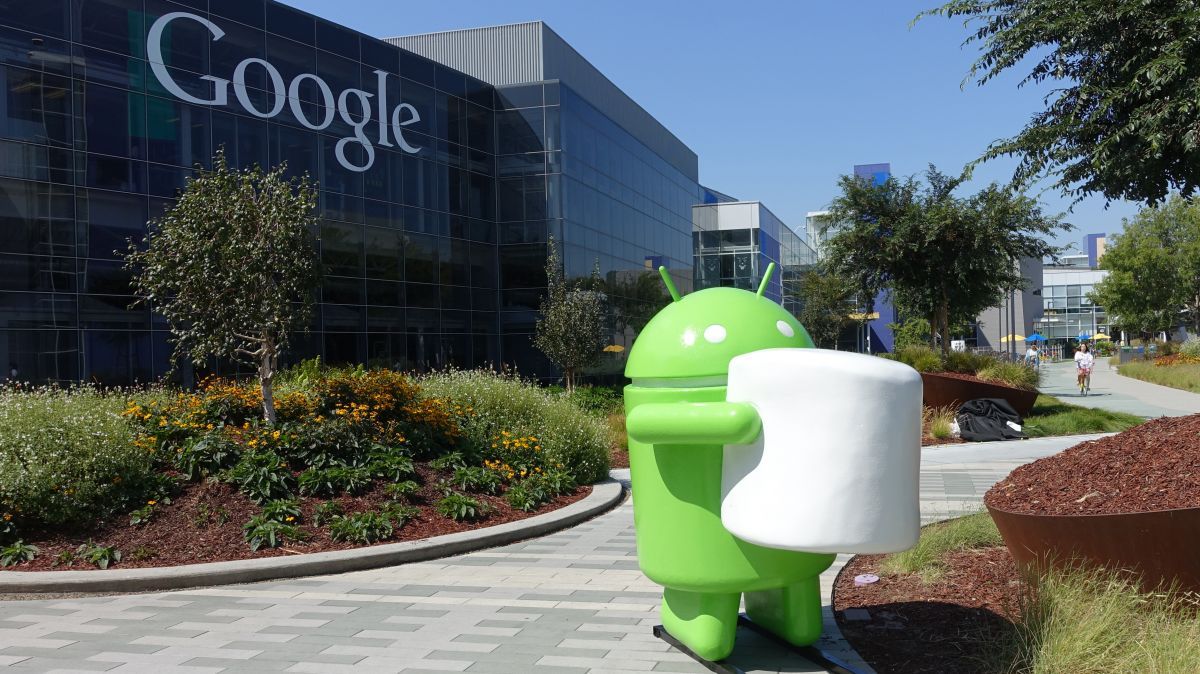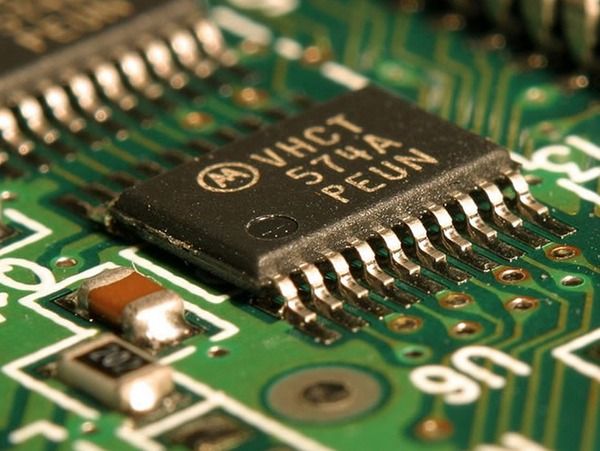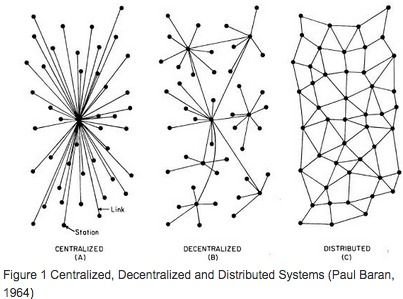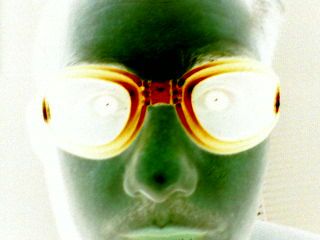Android M becomes Android Marshmellow.



Personal computers, cellphones, self-driving cars—Gordon Moore predicted the invention of all these technologies half a century ago in a 1965 article for Electronics magazine. The enabling force behind those inventions would be computing power, and Moore laid out how he thought computing power would evolve over the coming decade. Last week the tech world celebrated his prediction here because it has held true with uncanny accuracy—for the past 50 years. Read more

“Can tech companies really offer better experiences than the taqueria, flower shop or dry cleaner down the street, while taking a cut for themselves? Not necessarily. Quality control is a challenge when the supervisor is just software.

The ups and downs of Bitcoin as an internet currency may be compared to the eventual demise of Google Glass due to its lack of purpose among consumers. While it does not significantly hold true for bitcoins, which apparently have a more supportive and enthusiastic followers, the path that these two have taken and will take may be substantially similar than we like to admit.
For one, Bitcoin’s staggering price decline in the recent days left some people wondering what road it will eventually take in the near future. Is it only taking a detour or is it bound for a dead end?
In the case of Google Glass, it received much attention during its inception a few years ago. It was even named by Time magazine one of the best innovations of 2012. However, despite the ingenuity behind a supposed-to-be groundbreaking invention, Google Glass lacked a tangible sense, its purpose incoherent.
Thus, after much speculation, Google recently announced that it would stop selling Glass and that the product would no longer be developed in their research division.
Will Bitcoin End Up Like Google Glass?
Google Glass and Bitcoin are connected by the revolutionary technology that made them a star in the first place. There was some genius work in each of the piece, there’s no doubt about that, but without a clear purpose of how to integrate each product into the mainstream society, it becomes pointless.
Fortunately, bitcoins may stand a chance. Though there’s a portion of the populace that thinks of bitcoins as the internet currency that’s only best suited for illegal activities, its original function, which is for faster and cheaper way of transacting online, still proves to be prevalent.
It’s true that bitcoins were way more fun before that they are now, but it cannot be denied that this cryptocurrency has opened doors for a myriad of possibilities and eliminated security vulnerabilities, in which financial institutions such as banks and credit card companies are relatively known for.
Unlike Google Glass, Bitcoin has a tangible sense, a coherent purpose, and a crystal-clear vision. That is to move around the internet with your money free from the control of the government or any institution. Since there’s nothing that precedes this work of art and technology, it has a chance of staying. Thus, Bitcoin’s game is far from over.
Quoted: “Legendary cyberculture icon (and iconoclast) R.U. Sirius and Jay Cornell have written a delicious funcyclopedia of the Singularity, transhumanism, and radical futurism, just published on January 1.” And: “The book, “Transcendence – The Disinformation Encyclopedia of Transhumanism and the Singularity,” is a collection of alphabetically-ordered short chapters about artificial intelligence, cognitive science, genomics, information technology, nanotechnology, neuroscience, space exploration, synthetic biology, robotics, and virtual worlds. Entries range from Cloning and Cyborg Feminism to Designer Babies and Memory-Editing Drugs.” And: “If you are young and don’t remember the 1980s you should know that, before Wired magazine, the cyberculture magazine Mondo 2000 edited by R.U. Sirius covered dangerous hacking, new media and cyberpunk topics such as virtual reality and smart drugs, with an anarchic and subversive slant. As it often happens the more sedate Wired, a watered-down later version of Mondo 2000, was much more successful and went mainstream.”
Read the article here >https://hacked.com/irreverent-singularity-funcyclopedia-mondo-2000s-r-u-sirius/

Quoted: “If you understand the core innovations around the blockchain idea, you’ll realize that the technology concept behind it is similar to that of a database, except that the way you interact with that database is very different.
The blockchain concept represents a paradigm shift in how software engineers will write software applications in the future, and it is one of the key concepts behind the Bitcoin revolution that need to be well understood. In this post, I’d like to explain 5 of these concepts, and how they interrelate to one another in the context of this new computing paradigm that is unravelling in front of us. They are: the blockchain, decentralized consensus, trusted computing, smart contracts and proof of work / stake. This computing paradigm is important, because it is a catalyst for the creation of decentralized applications, a next-step evolution from distributed computing architectural constructs.
Read the article here > http://startupmanagement.org/2014/12/27/the-blockchain-is-the-new-database-get-ready-to-rewrite-everything/

By Ben Coxworth — Gizmag
Four years ago, we first heard about how Korean scientists had proposed using sound to charge mobile phones. They explained that it could be done via a piezoelectric effect, in which zinc oxide nanowires converted sound-caused vibrations into electricity. At the time, the researchers couldn’t generate enough of a current to actually charge a phone. Now, however, scientists from Nokia and Queen Mary University of London (QMUL) have succeeded in doing so.
Like the Korean team, the Nokia/QMUL researchers utilized zinc oxide, in the form of a sheet of tiny nanorods. As is the case with other piezoelectric materials, zinc oxide produces an electrical current when subjected to mechanical stress. The nanorods will actually bend in response to sound waves, creating that stress in the process.

The headlines pound away at us day after day with ominous news. Ebola has the potential to spread around the globe through rapid transport on airplanes, trains and automobiles. The United States Centers for Disease Control (CDC) and other health experts do not recommend shutting down air travel from West Africa. “If you try to shut down air travel and sea travel, you risk affecting to a huge extent the economy, people’s livelihoods and their ability to get around without stopping the virus from traveling,” said Greg Hartl, a World Health Organization spokesperson.
In a recent poll, a majority of Americans believe air travel restrictions are a necessity to stop the spread of Ebola in the United States. In fact, 56 percent said the federal government should bar those who have “recently” been in Ebola nations from entering the U.S. It is obvious we must find better ways to use technology to our advantage to detect people who are showing symptoms of the virus. This is where augmented reality and wearable technology can improve our detection rate of sick people stricken with Ebola.
Currently Ebola screening is taking place at five United States airports: Newark, Atlanta, Chicago, New York and Washington. US government officials claim that 95% of travels from West Africa would go through those airports to enter the United States. Once a traveller passed a screener check-point, they would be free to enter the US without being monitored after that point.
Recent promising technology developments show that thermal imaging devices can be attached to smartphones for use. Common sense would dictate that if we can leverage thermal imaging devices on smartphones that we can also use Augmented Reality (AR) wearable glasses for the same use. Meta Space Glasses, Vuzix, Epson, Google Glass and a host of other new wearable AR glasses could create an incredible opportunity to detect people with fevers that may be contagious with the Ebola virus just by looking at them with this promising technology.
FLIR One has an attachable device for the iPhone 5S that can turn it into a thermal imagine device for $349.99. That alone is impressive. This is a tangible use that is already on the market. Redesigning an Augmented Reality use would not be an impossible feat. A key feature, according to some online reviews of the FLIR One, is that the device can determine the temperature of a person or object in view.
I am not an expert in thermal imaging, but current technology should be able to develop an alert of a temperature on a person that exceeds 99 degrees Fahrenheit. If my Augmented Reality thermal imaging glasses detect a person with a heat signature of over 99 degrees Fahrenheit, a digital overlay alert pop-up could appear in front of my eyes. Border Patrol agents, police officers, medical professionals, school officials, and other vital stakeholders could easily monitor areas all over the country and world to be quickly alerted to someone who has a high fever. Many civilians would buy the device just to protect their own family! Medical teams could quickly identify someone who may be infected with the Ebola virus.
This is an incredible opportunity to finally show how Augmented Reality, coupled with other cutting-edge technologies can save countless lives. This solution can permeate throughout the United States and the world. If we look at computer security, a firewall alone is not the best defense to prevent a computer virus. An Intrusion Detection System (IDS) , along with a firewall, can detect suspicious traffic within a computer network and thwart a serious breach of security. AR thermal imaging glasses tweaked with accurate temperature alerts can be our Ebola IDS system which we desperately need.
The clock is ticking and we need to think outside the box to protect our communities and our families. The Augmented Reality community is an international group that has been pushing AR in a positive direction. It is our moment to shine and step up in this challenging time in history. The future of humanity may depend on it.
——–
[Update 10/18/14] — Augmented Legality Expert Brian Wassom responded to this article and discussed some of the legal ramifications of scanning someone with a thermal imaging device. Click HERE for his legal insight.
Brian Wassom also alerted me to a new thermal imaging device that rivals the FLIR One called the Seek Thermal Infared camera for smartphones for $199. Thanks to Twitter user @seeingwithsound. Wired.com reviews the device. What is interesting is that you can set the device to scan for skin temperatures of humans.
AR expert Frank Maggiore also advised me of the IR-Blue DM which also “connects using Bluetooth to your iPhone or Android device to show the temperature readings as colors on the screen” for $195. This clearly shows there are new options of devices on both Android and iOS to potentially use to stop Ebola.
Image Credit: Flickr By spcbrass
————
Joseph Rampolla is a police Captain who has been teaching in the realm of cyber-crime, counter-terrorism, and emerging technologies. His passion is to teach about the positive uses of emerging technologies while raising awareness to the potential downside of innovation. He has dedicated his life to teaming up with eWarriors and Lifeboat supporters around the globe to protect the innocent in this lifelong mission. ” The greatest use of life is to spend it for something that will outlast it.” by William James is one of his favorite quotes.
Joseph currently is the host of a global podcast called Augmented Reality Dirt. AR Dirt explores how augmented reality influences society, cyber-crime, and our legal system. AR Dirt has listeners in over 99 countries and can be heard free via iOS, Android, and Window devices. Go to www.ARdirt.com/ourapp to find out how to download it for free on your smartphone or tablet.

By Andy Greenberg — Wired
If you’re making a phone call with your iPhone, you used to have two options: Accept the notion that any wiretapper, hacker or spook can listen in on your conversations, or pay for pricey voice encryption software.
As of today there’s a third option: The open source software group known as Open Whisper Systems has announced the release of Signal, the first iOS app designed to enable easy, strongly encrypted voice calls for free. “We’re trying to make private communications as available and accessible as any normal phone call,” says Moxie Marlinspike, the hacker security researcher who founded the nonprofit software group. Later this summer, he adds, encrypted text messaging will be integrated into Signal, too, to create what he describes as a “single, unified app for free, easy, open source, private voice and text messaging.”

By Nick Lavars — GizMag
Your level of interest in the latest smart ring developments might just depend on how much time you spend yanking your phone out of your pocket. For those after connectivity without lifting a finger, the Mota Smart Ring is designed to ensure important updates are on hand right when you need them.